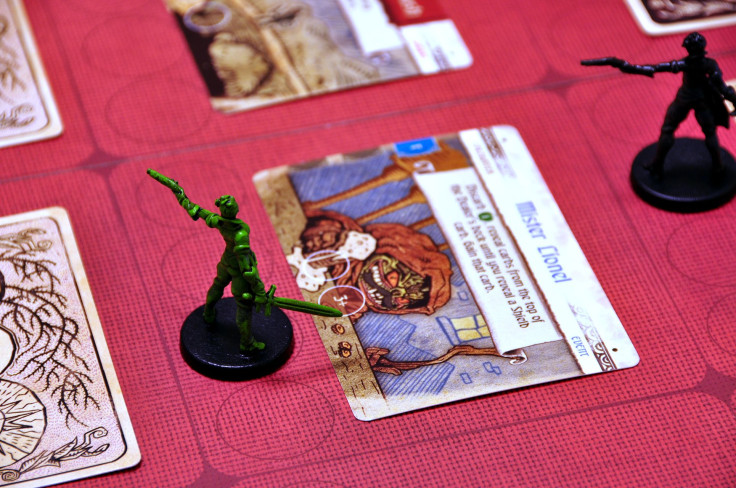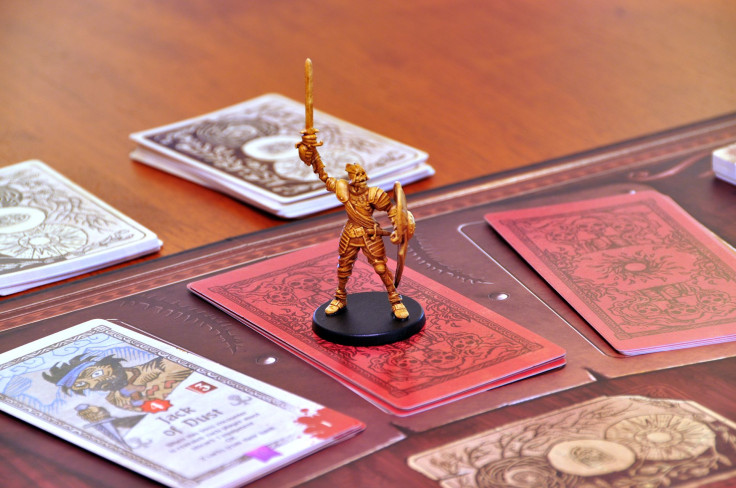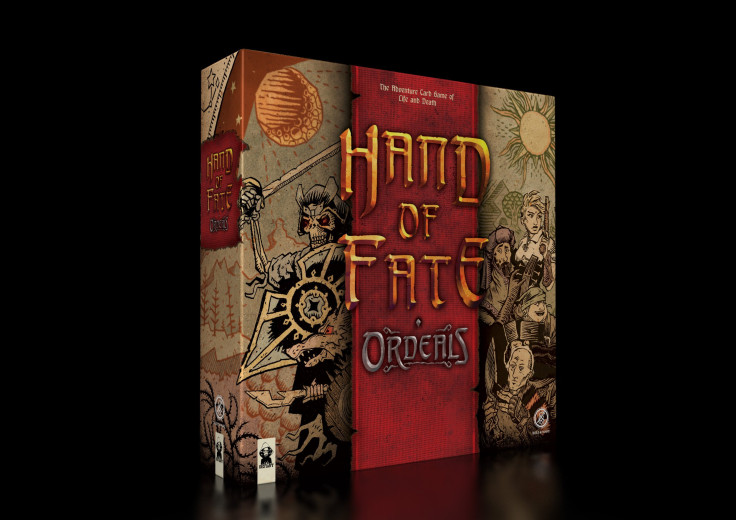Hand of Fate took a board game concept and turned it into a video game, complete with button-mashing action and 3D graphics. Now, developer Defiant Development and board game company Rule & Make have teamed up to make the real-world board game, based on the video game based on a board game. How does the analog life treat Hand of Fate? Based on my experiences so far, the game is incredibly fun despite how long it may take you to play it.
It should be noted that I haven’t played through a complete game of Hand of Fate: Ordeals just yet. Therefore, this shouldn’t be treated as a full review, but first impressions based on limited time.
Hand of Fate: Ordeals takes deckbuilding games and mashes them into a dungeon crawler. Although there is a pretty substantial number of decks of cards, pieces and other bits in play, Hand of Fate: Ordeals was pretty easy to learn, especially since I have experience with deckbuilding games. My friend and I were playing confidently about a half-hour after opening the box.

In each game of Hand of Fate: Ordeals, players must defeat three dungeon bosses while also competing to see who can gain the most fame. Each turn starts out with a player pulling five cards from his or her own deck and using these to determine what actions to take next. If you are familiar with games like Star Realms, this should all be familiar. Players use “Effort” to buy new gear and actions, both represented by cards that end up shuffled into your deck.
Unlike Star Realms, there’s much more going on than dealing with the cards alone. There is also a massive board complete with different encounters to take on. Some encounters are basic shops or other advantageous experiences while others can be ambushes from enemies or even the level’s boss looking to wipe you out. Players spend food tokens to move from one encounter to the next until they decide to tackle an encounter or just end their turn.
Once a turn has ended, the player can spend any Effort points earned in that round on new cards. This system returns the game to a Star Realms-like deckbuilder, with a row of cards available for purchase.

If a player does decide to enter into combat, or is forced into it through an ambush encounter, minion cards are randomly drawn for players to defeat. Every player will always have a generic, low-level weapon, but better weapons can be bought and cards can be added to each weapon to increase offensive powers. If players can deal enough damage to kill all of the minions, the player survives the encounter. If not, expect to take a Pain Card, which can include losing life, items or food.
A game of Hand of Fate: Ordeals consists of three levels, with each level having a boss to defeat. These boss battles are just like minion battles, but typically have worse effects if a player loses. Once a boss has been defeated, the encounter board is cleared and replaced with a series of new, stronger encounters. Once the final boss has been slain, the player with the highest Fame score wins. Players can earn Fame by defeating monsters and scrapping extra pieces of equipment, among other ways.
After a slight learning curve, and having to decipher a few cards that didn’t seem to be finalized just yet, my friend and I were having a great time plowing our way through the encounter board in search of the level boss. Gameplay moved fairly quickly, and since there were only two of us playing, the amount of downtime was reduced to a minimum.

That said, both of us felt the game was dragging on for longer than anticipated. Even though there wasn’t much downtime, it still felt like we progressed through the first level at a snail’s pace. No information was given for how long a typical game of Hand of Fate should take, but when one third of your game is going on for over an hour and a half, that doesn’t feel right. While you can definitely attribute some of the long playtime to us having to stop and check rules every now and then, playing with two more players would only make it worse. Even if all four players knew what to do and how to do it, it still seems like a game might feel like it is dragging.
There’s a lot to love in Hand of Fate: Ordeals. The deckbuilding mechanics work well and pair nicely with the exploration and combat mechanics found in other areas of the game. Being able to craft a character’s play style, including the weapons and gear used, was fun and something that will encourage players to try new styles and approaches with each game. Speaking superficially, there’s also some great artwork getting used as well. The version I played didn’t have all the finalized artwork in place just yet, but the overall look and aesthetic even grabbed someone’s attention who wasn’t playing, and had her interested in joining in the next round.
So what do you think? Are you interested in trying out Hand of Fate: Ordeals for yourself? What other video game/board game adaptations have you enjoyed playing? Let us know your thoughts in the comments section below.


















